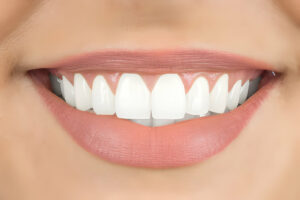The Zone Diet is a popular eating plan that has been around since the mid-1990s. It was created by Dr. Barry Sears, a biochemist who believes that the right balance of macronutrients can help control inflammation in the body. The diet is based on the idea that eating a specific ratio of protein, carbohydrates, and fat at every meal can help reduce inflammation and promote weight loss.
Understanding the Zone Diet requires some basic knowledge of macronutrients. The diet is based on the idea that the body needs a certain ratio of protein, carbohydrates, and fat to function optimally. According to Dr. Sears, the ideal ratio is 40% carbohydrates, 30% protein, and 30% fat. This ratio is supposed to keep insulin levels stable, which in turn helps reduce inflammation in the body. The Zone Diet also emphasizes eating low-glycemic carbohydrates and healthy fats, such as olive oil and avocado.
Table of Contents
ToggleKey Takeaways
- The Zone Diet is an eating plan based on the idea that a specific ratio of macronutrients can help control inflammation in the body.
- The diet emphasizes eating low-glycemic carbohydrates and healthy fats and recommends a ratio of 40% carbohydrates, 30% protein, and 30% fat at every meal.
- While some studies suggest that the Zone Diet may have benefits for weight loss and reducing inflammation, more research is needed to fully evaluate its effectiveness.
Understanding the Zone Diet
What Is the Zone Diet?
The Zone Diet is a popular diet that has been around for several decades. It is a low-carbohydrate, high-protein diet that emphasizes eating foods that are low in glycemic index. The diet was developed by Dr. Barry Sears, a biochemist, and it is based on the idea that by controlling the levels of insulin in the body, individuals can lose weight and improve their overall health.
How Does the Zone Diet Work?
The Zone Diet works by controlling the levels of insulin in the body. Insulin is a hormone that is produced by the pancreas and is responsible for regulating blood sugar levels. When individuals eat foods that are high in carbohydrates, the body produces more insulin to help regulate the sugar levels in the blood. This can lead to insulin resistance, which can cause weight gain and other health problems.
The Zone Diet works by limiting the intake of high-glycemic foods, such as bread, pasta, and rice, and increasing the intake of low-glycemic foods, such as fruits, vegetables, and lean proteins. By doing this, the body produces less insulin, which can help individuals lose weight and improve their overall health.
Principles of Zone Eating
The principles of Zone eating are based on the idea of balancing macronutrients in each meal. The diet recommends that each meal should consist of 40% carbohydrates, 30% protein, and 30% fat. This balance of macronutrients is said to help regulate insulin levels and promote weight loss.
The diet also emphasizes eating small, frequent meals throughout the day to keep insulin levels stable and prevent hunger. The diet recommends eating five meals per day, with each meal consisting of a balance of macronutrients.
Overall, the Zone Diet is a popular diet that has been around for several decades. While there is some evidence to suggest that the diet may be effective for weight loss and improving overall health, more research is needed to fully understand the benefits and drawbacks of the diet.
Benefits of the Zone Diet
The Zone Diet is a popular diet that has been around for decades. It has been touted as a way to achieve balanced weight loss while still providing all the necessary nutrients for optimal health. Here are some of the benefits of the Zone Diet:
Health Advantages
The Zone Diet is designed to help individuals achieve optimal health by providing a balance of macronutrients (carbohydrates, protein, and fat) in every meal. This balance is believed to help reduce inflammation in the body, which can lead to a variety of health problems such as heart disease, diabetes, and cancer.
The diet also emphasizes the consumption of whole, nutrient-dense foods such as fruits, vegetables, lean proteins, and healthy fats. This can help individuals meet their daily nutrient needs and reduce the risk of nutrient deficiencies.
Weight Loss and Management
One of the primary benefits of the Zone Diet is its ability to promote weight loss and weight management. The diet is designed to help individuals achieve a state of “metabolic efficiency,” which means that the body can burn fat for fuel instead of relying on carbohydrates.
By following the diet’s recommended macronutrient ratios (40% carbohydrates, 30% protein, and 30% fat), individuals can achieve a calorie deficit without feeling hungry or deprived. This can help promote sustainable weight loss and make it easier to maintain a healthy weight over time.
Additionally, the Zone Diet encourages the consumption of high-fiber foods, which can help individuals feel fuller for longer periods and reduce the likelihood of overeating.
Overall, the Zone Diet has several potential benefits for those looking to achieve balanced weight loss and optimal health. However, it is important to consult with a healthcare professional before starting any new diet or exercise program.
Zone Diet Meal Planning
The Zone Diet is a popular diet that focuses on balancing macronutrients in every meal to promote weight loss and overall health. In this section, we will discuss how to create a Zone Diet meal plan and provide some beginner-friendly Zone Diet recipes.
Creating a Zone Diet Meal Plan
To create a Zone Diet meal plan, you need to calculate your daily calorie needs and determine the appropriate macronutrient ratio for your body. The standard macronutrient ratio for the Zone Diet is 40% carbohydrates, 30% protein, and 30% fat. However, this ratio can be adjusted based on your individual needs and goals.
Once you have determined your macronutrient ratio, you can start planning your meals. The easiest way to do this is to use food blocks, which are pre-measured portions of macronutrients. For example, one food block of carbohydrates contains 9 grams of carbohydrates, one food block of protein contains 7 grams of protein, and one food block of fat contains 1.5 grams of fat.
To create a meal, you simply combine the appropriate number of food blocks for each macronutrient. For example, a typical Zone Diet meal for a woman might consist of three food blocks of carbohydrates, three food blocks of protein, and two food blocks of fat. This would provide a total of 360 calories.
Zone Diet Recipes for Beginners
If you’re new to the Zone Diet, it can be helpful to start with some simple and tasty recipes. Here are a few beginner-friendly options:
- Zone Diet Breakfast: Egg white omelet with spinach, mushrooms, and feta cheese. Serve with a side of fresh fruit.
- Zone Diet Lunch: Grilled chicken breast with mixed greens, cherry tomatoes, and avocado. Dress with a vinaigrette made with olive oil and balsamic vinegar.
- Zone Diet Dinner: Baked salmon with roasted asparagus and sweet potato wedges. Season the salmon with lemon juice, garlic, and dill.
These recipes are easy to prepare and provide a good balance of macronutrients. However, feel free to adjust the portion sizes or ingredients to fit your individual needs and preferences.
In conclusion, creating a Zone Diet meal plan is all about balancing macronutrients in every meal. By using food blocks and experimenting with different recipes, you can create a healthy and satisfying meal plan that promotes weight loss and overall health.
Getting Started with the Zone Diet
The Zone Diet is a popular diet plan that focuses on balancing macronutrient intake to achieve optimal health and weight loss. The diet involves eating a specific ratio of 40% carbohydrates, 30% protein, and 30% fat at every meal and snack.
Steps for Beginners
Here are some steps to follow for beginners who want to start the Zone Diet:
- Calculate your daily caloric needs and divide it into three meals and two snacks. Use a Zone Diet calculator to determine the number of blocks you need for each meal.
- Choose low-glycemic index carbohydrates such as fruits, vegetables, and whole grains for your meals and snacks. Avoid high-glycemic index carbohydrates such as refined sugar and processed foods.
- Choose lean protein sources such as chicken, fish, and tofu for your meals and snacks. Avoid high-fat protein sources such as bacon and sausage.
- Choose healthy fats such as olive oil, nuts, and avocado for your meals and snacks. Avoid saturated and trans fats found in fried foods and processed snacks.
- Use a food scale to measure your portions accurately. Follow the Zone Diet’s portion guidelines to ensure you are getting the right amount of macronutrients at every meal and snack.
Tips for Success
Here are some tips for success when starting the Zone Diet:
- Plan your meals and snacks ahead of time to avoid making unhealthy choices when you are hungry.
- Keep healthy snacks on hand such as nuts, fruits, and vegetables to avoid reaching for processed snacks.
- Drink plenty of water to stay hydrated and avoid overeating.
- Incorporate physical activity into your daily routine to boost weight loss and improve overall health.
- Seek support from friends and family or join a support group to stay motivated and accountable.
Starting the Zone Diet can be challenging, but with the right mindset and tools, anyone can achieve success in achieving a healthy lifestyle.
Evaluating the Zone Diet
The Zone Diet is a popular weight loss plan that focuses on balancing macronutrients in meals. The diet recommends consuming 40% carbohydrates, 30% protein, and 30% fat in every meal and snack.
Effectiveness for Weight Loss
Research studies have evaluated the effectiveness of the Zone Diet for weight loss. A short-term clinical trial found that participants on the Zone Diet lost an average of 3.5 pounds in four weeks [1]. However, a long-term study found that the Zone Diet did not result in significant weight loss compared to a control group after one year [2].
While the Zone Diet may result in short-term weight loss, its long-term effectiveness is unclear. Additionally, the diet’s strict macronutrient ratios may make it difficult for some individuals to adhere to the plan.
Comparison with Other Diets
The Zone Diet is one of many popular weight loss plans available. Compared to other diets, the Zone Diet’s emphasis on macronutrient balance sets it apart from plans that restrict certain food groups or focus on calorie counting.
A review of 14 diets found that the Zone Diet ranked in the middle for weight loss effectiveness [3]. While the diet may be effective for some individuals, it may not be the best fit for everyone.
Overall, the Zone Diet may be a viable option for those looking to lose weight and balance their macronutrient intake. However, its long-term effectiveness and strict macronutrient ratios should be considered before starting the plan.
[1] Verywell Fit
[2] NCBI
Frequently Asked Questions
What constitutes a balanced meal plan on the Zone Diet?
The Zone Diet is a balanced meal plan that emphasizes consuming a specific ratio of macronutrients. The diet recommends consuming 40% of calories from carbohydrates, 30% from protein, and 30% from fat. This balance of macronutrients is believed to help regulate insulin levels, which can lead to weight loss and improved health.
Can you provide some Zone Diet-friendly recipes?
There are many Zone Diet-friendly recipes available online. Some popular options include grilled chicken with steamed vegetables, turkey chili, and salmon with roasted sweet potatoes. It is important to note that while these meals are balanced according to the macronutrient ratio of the Zone Diet, they may not fit everyone’s taste preferences or dietary needs.
What are the reported health benefits of following the Zone Diet?
The Zone Diet is believed to offer several health benefits, including weight loss, improved insulin sensitivity, and reduced inflammation. Additionally, some studies have suggested that following the Zone Diet may improve heart health, reduce the risk of certain cancers, and improve cognitive function.
What are the potential drawbacks or disadvantages of the Zone Diet?
One potential drawback of the Zone Diet is that it can be difficult to follow, as it requires careful monitoring of macronutrient intake. Additionally, some people may find that the diet is too restrictive or does not fit their dietary needs or preferences. It is important to speak with a healthcare provider before beginning any new diet or exercise regimen.
How does the Zone Diet complement a CrossFit training regimen?
The Zone Diet is often recommended for those who engage in high-intensity exercise, such as CrossFit. This is because the balanced macronutrient ratio of the diet is believed to support optimal performance and recovery. Additionally, the diet may help reduce inflammation and improve insulin sensitivity, which can further benefit athletes.
How does the Zone Diet differ from a ketogenic diet?
While the Zone Diet and ketogenic diet both emphasize macronutrient balance, they differ in their specific recommendations. The Zone Diet recommends consuming 40% of calories from carbohydrates, while the ketogenic diet typically limits carbohydrate intake to less than 50 grams per day. Additionally, the ketogenic diet emphasizes high fat intake, while the Zone Diet recommends a more moderate fat intake.




















